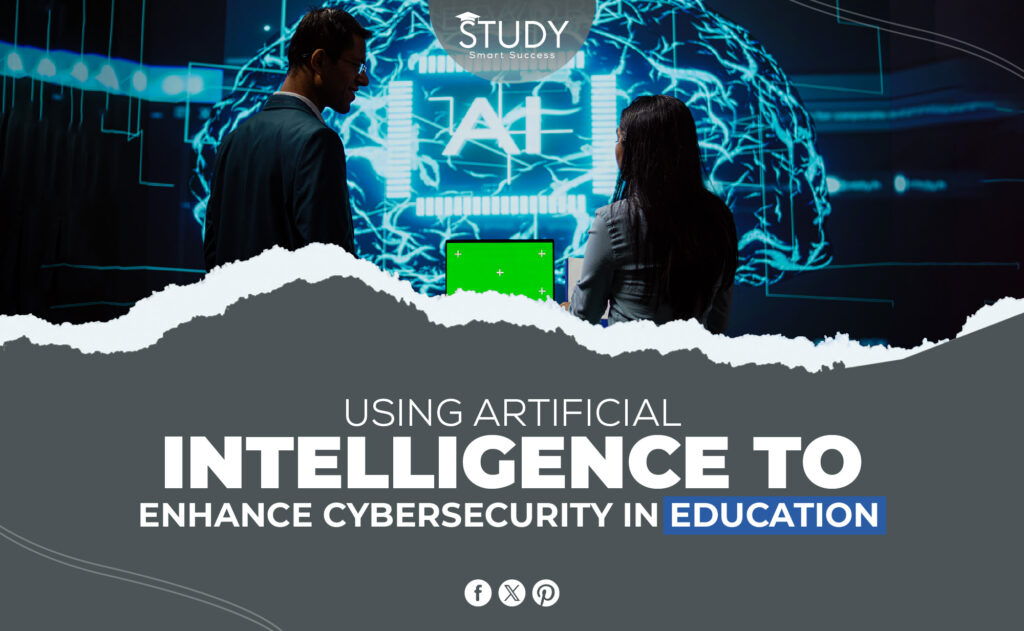Digital schooling has arrived. Higher education institutions use the Internet to teach, store data, and communicate with students. However, greater technological use has raised the danger of school cyberattacks. More must be done to protect student and staff data. School cybersecurity can be greatly improved by AI. A certificate IV in cyber security would assist industry enthusiasts in learning the foundations and advanced skills needed to solve these issues.
Read further in Educational Technology.
The Growing Threat of Cyberattacks in Education
Cybercriminals often target schools. Colleges and schools that keep student data can lose data, personal information, and money from cyberattacks. Hackers target educational institutions because they have extensive databases and poor security. Identity theft, blackmail, and education system disruptions may occur from these breaches.
Cyberattacks can take many forms, including:
- Phishing attacks: Malicious emails or links sent to staff and students, tricking them into revealing sensitive information.
- Ransomware: A type of malware where hackers take control of the institution’s data and demand payment to release it.
- Data breaches: Unauthorized access to databases, leading to the exposure of confidential information like names, addresses, and Social Security numbers.
- Distributed Denial of Service (DDoS) attacks: These attacks overwhelm an institution’s servers, causing systems to go offline, making it difficult for students and staff to access online resources.
To stay ahead of these threats, many educational institutions are turning to AI-powered cybersecurity solutions.
How AI Enhances Cybersecurity in Education
Cybersecurity management changes with AI. Traditional cybersecurity measures include firewalls, antivirus software, and IT staff monitoring events. Today’s complex digital landscape may demand more than these tactics. AI boosts cybersecurity, especially in education, where resources are tight, and cyberattacks are growing more sophisticated and target student and institutional data. Automating threat detection using AI improves system resilience and efficiency. This sector may benefit from cyber security certification Australia.
Here are a few ways AI can enhance cybersecurity in education:
-
Threat Detection and Prevention
AI can identify cyber dangers faster and more precisely than humans. The AI systems use machine learning algorithms to scan enormous amounts of data in real-time to identify attack patterns. AI can detect suspicious network activities, like several login attempts from a single IP address, and notify the IT team before the attack becomes serious.
-
Automated Responses
Quick action is needed after a cyberattack. AI-powered systems can automatically respond to attacks in seconds. If AI detects phishing, it can block the malicious email or link to protect users. During an attack, automated systems can shut down important network sections to minimize harm while specialists solve the problem.
-
Continuous Monitoring
AI can monitor systems 24/7, unlike human teams. It constantly monitors threats to protect educational systems. This is useful for schools and universities where cyberattacks might happen anytime. Continuous monitoring allows AI to learn from past attacks and adapt to future ones, boosting its detection methods.
-
Advanced Data Security
Every educational institution’s most valuable asset is data, so securing it is crucial. They can encode data to prevent hackers from accessing it. AI systems can also detect anomalous data access patterns, such as a staff member viewing more files than usual, which may suggest an internal threat.
-
User Authentication and Access Control
AI improves user authentication and access management, improving cybersecurity. Facial, fingerprint, and voice recognition can restrict authorized people’s access to the institution’s digital infrastructure. AI can monitor login habits and alert the system to anomalous access, such as a different device or location.
Challenges of Implementing AI in Educational Cybersecurity
While AI offers numerous benefits, it is important to acknowledge that implementing AI in cybersecurity comes with challenges.
- High Costs: Setting up AI-powered cybersecurity systems can be expensive, especially for smaller institutions with limited budgets. Schools may need to invest in specialized hardware and software, as well as train staff on how to use the technology effectively.
- Data Privacy Concerns: How AI systems use and retain enormous volumes of data to learn and anticipate is an issue. AI solutions at educational institutions must comply with privacy standards and protect sensitive data like student data.
- Dependence on Technology: While AI can automate many tasks, there’s a risk of over-reliance on technology. Educational institutions must strike a balance between using AI and maintaining human oversight to ensure that all cybersecurity protocols are being followed correctly.
- Lack of Expertise: Technical skills are needed to implement AI-driven cybersecurity solutions. Schools and universities may require more trained staff to manage these systems. Obtaining a Certificate IV in Cyber Security can help IT staff learn how to use AI-powered solutions.
The Future of AI and Cybersecurity in Education
Technical skills are needed to implement AI-driven cybersecurity solutions. Schools and universities may require more trained staff to manage these systems. Obtaining a Certificate IV in Cyber Security can help IT staff learn how to use AI-powered solutions.
More intelligent AI systems are emerging. More data and learning from past attacks will help them predict and prevent future threats. Educational institutions must use this proactive strategy to protect their digital assets and maintain student, staff, and parent trust. AI-driven systems also adapt in real-time, decreasing breach risk and responding faster to emerging threats.
Conclusion
AI in cybersecurity can analyze massive volumes of data to find patterns and abnormalities humans might overlook. It can detect and stop breaches in real-time, decreasing downtime and preserving student and institutional data. AI-driven systems can also learn from past attacks to improve defences and protect against evolving cyber threats. This proactive approach keeps schools ahead in a shifting cyber landscape.
AI is crucial to cybersecurity in a world where technology and education are interwoven. AI in Educational Technology safeguards institutions from cyberattacks and makes learning safer for future generations.


